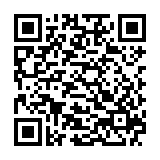The holiday season is a time of joy, celebration, and togetherness, transcending cultural and linguistic boundaries. In the heart of multicultural gatherings, interpreters play a crucial role in ensuring that the festive spirit is communicated seamlessly across languages. From bustling festive markets to diplomatic celebrations, interpreters navigate a myriad of linguistic challenges to bring people together. This article explores the experiences of interpreters during the holidays, shedding light on the intricacies, rewards, and challenges of conveying and interpreting the holiday spirit in diverse settings.
The Mosaic of Multicultural Holiday Events
Festive Markets come alive with a vibrant blend of cultures, languages, and traditions. Interpreters play a pivotal role in facilitating communication among vendors, visitors, and performers, contributing to the rich tapestry of these events. These multicultural settings showcase the diversity of languages spoken, and interpreters become the linchpin in fostering understanding and connection. Anecdotes of successful cross-cultural communication exemplify interpreters’ profound impact on enhancing the holiday experience in festive markets and interpreting the holiday spirit.
Diplomatic celebrations during the holiday season carry a unique significance, demanding precision and cultural sensitivity. Interpreters navigate the intricate diplomatic protocol, ensuring accurate interpretation that fosters positive relations. The challenges in diplomatic settings are nuanced, requiring interpreters to maintain neutrality and convey messages subtly. Despite these challenges, interpreters contribute significantly to the success of diplomatic celebrations, playing a vital role in cross-cultural communication.
The Challenges of Interpreting the Holiday Spirit Across Languages
Interpreting the holiday spirit poses a unique set of challenges for interpreters, as it involves conveying not just words but also the cultural nuances, emotions, and sentiments associated with festive celebrations. Here are some challenges faced by interpreters in capturing the essence of the holiday spirit:
Cultural Context
Challenge: Holidays often carry deep cultural significance, and traditions associated with these celebrations can vary widely from one culture to another. Translating these cultural nuances accurately requires a profound understanding of the context, historical background, and cultural symbols.
Solution: Interpreters must invest time in researching and familiarizing themselves with the cultural context of the holiday being celebrated. This may involve understanding traditional customs, rituals, and the historical significance of specific celebrations.
Idiomatic Expressions and Phrases
Challenge: The holiday season is filled with idiomatic expressions, festive sayings, and culturally specific phrases that may not have direct equivalents in other languages. Literal translations may miss the intended emotional impact or not exist in the target language.
Solution: Interpreters must be adept at conveying the intended meaning behind idiomatic expressions. This may involve providing explanations, finding culturally relevant equivalents, or creatively adapting the expressions to maintain the festive atmosphere.
Emotional Tone and Sentimentality
Challenge: Holidays are characterized by a heightened emotional tone, filled with joy, warmth, and sentimentality. Translating these emotions accurately can be challenging, as different languages may express feelings in distinct ways, and cultural norms regarding emotional expression vary.
Solution: Interpreters must skillfully convey the emotional tone of holiday messages, ensuring that warmth and sentimentality are not lost in translation. This may involve using appropriate tone, intonation, and gestures to match the cultural expectations of emotional expression.
Inclusive Language
Challenge: Holidays are times of inclusivity and togetherness. Translating messages that are inherently inclusive and culturally sensitive requires careful consideration, as expressions of inclusivity may differ across cultures.
Solution: Interpreters must be mindful of using language that fosters inclusivity and avoids inadvertently excluding certain groups. This requires a deep understanding of cultural norms and sensitivities to ensure the holiday messages resonate positively with diverse audiences.
Regional and Dialectical Variances
Challenge: Within a single language, regional variations and dialects may impact the understanding of holiday messages. Translating for a diverse audience may require adjusting language choices to be universally understood.
Solution: Interpreters must know regional variations and adjust their language accordingly. They may need to choose words and expressions that are more universally recognized, ensuring that the holiday messages are accessible to a broad audience.
Rewards of Interpreting During the Holidays:
Cultural Exchange
Cultural exchange opportunities flourish through interpreting during the holidays, facilitating a deeper understanding of diverse traditions. Interpreters contribute significantly to cultural exchange, breaking down barriers and fostering a sense of unity.
Building Community
Community building emerges as a core aspect of interpreting during holiday events. Interpreters play a pivotal role in creating a sense of community, ensuring everyone feels included and celebrated.
Final Thoughts
Amid multicultural holiday events, interpreters emerge as unsung heroes, weaving threads of understanding and connection. Despite the challenges, their contributions are immeasurable, fostering a spirit of unity and celebration that transcends language barriers. As we revel in the festivities, let us acknowledge and appreciate the interpreters behind the scenes, making the holiday spirit truly universal.





0 Comments